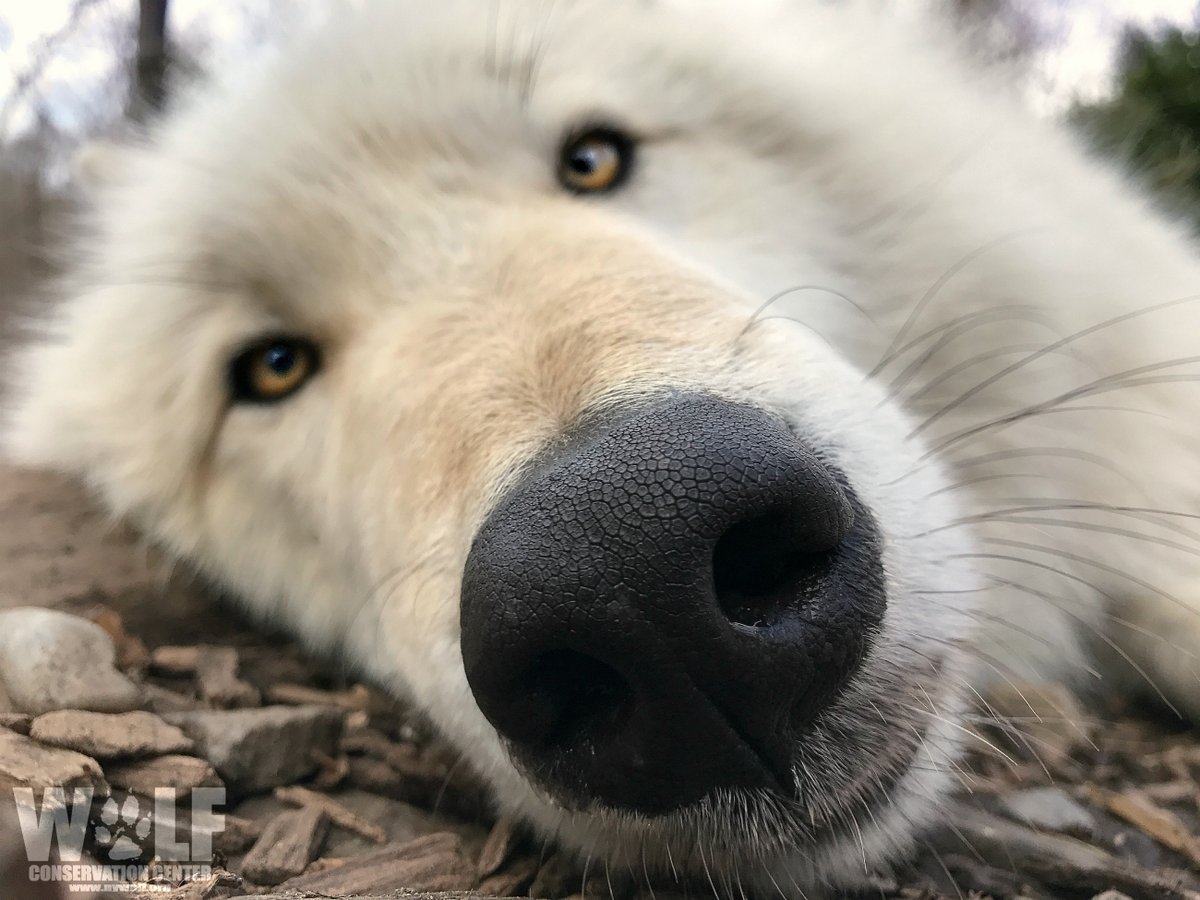Imagine simply inhaling and being able to tell who has passed by and how long ago, what sex they are and what their general health is, where they’ve been, what they’ve eaten and what mood they’re in.
To a large degree, a wolf navigates the world through its sense of smell. The tip of its nose is a complex landscape of minute ridges and creases, which, when combined with the outer edges of nostrils, creates a pattern as distinct as a human fingerprint.
Each nostril can be moved independently, allowing wolves to determine which direction a particular scent is coming from. Inside the broad snout are approximately 280 million scent receptors, a princely amount when compared to a German shepherd’s 225 million, a dachshund’s 125 million and humans’ scant five to six million.
A wolf’s nose alerts them to danger, the presence of pack members or enemies, female wolves in heat and prey. Each wolf has distinctive scent glands on different parts of their body so smells unique, at least to other canids.
Scientists know that wolves can smell prey 2.5 kilometres (1.5 miles) away. Gordon Haber, who spent most of his life researching wolves in Alaska, was convinced that wolves could smell a dead moose or caribou buried under three metres (ten feet) of snow, even if the wind was blowing the wrong direction.
In Wolves on the Hunt, a radio-collared female wolf with pups makes a beeline for a caribou herd more than 100 kilometres (62 miles) distant.
What surprised the researchers was the timing of the wolf’s journey and the relatively straight line she made for the caribou. The week before her trek, the average daily distance between her den and the caribou was 242 kilometres (150 miles). The day she left, it had narrowed by more than half.
If the wolf had veered to the northwest, she might have missed the herd entirely or not found them until later. There’s no way to know if she smelled the ungulates from her den, picked up their scent partway through her journey or simply headed in the direction she’d found caribou before.
But caribou are highly mobile so the wolf couldn’t have depended on memory alone. The researchers speculate that if a human can smell smoke from a forest fire more than 100 kilometres (62 miles) away, why couldn’t a wolf smell a caribou herd from the same distance?
Photo courtesy Wolf Conservation Centre.
WCC is an environmental education organization that teaches people about wolves, their relationship to the environment and humans’ role in protecting their future.


I wonder how many people put two and two together. Wolves are territorial animals and on regular basis go around their territory (scent marking). There’s no chance a sick / vulnerable prey will avoid wolf’s teeth / reality check for long. But when a lot of adult wolves get killed by humans they will chase only small ungulates (roe deer vs elk , moose) because it takes time to properly learn hunting skills.